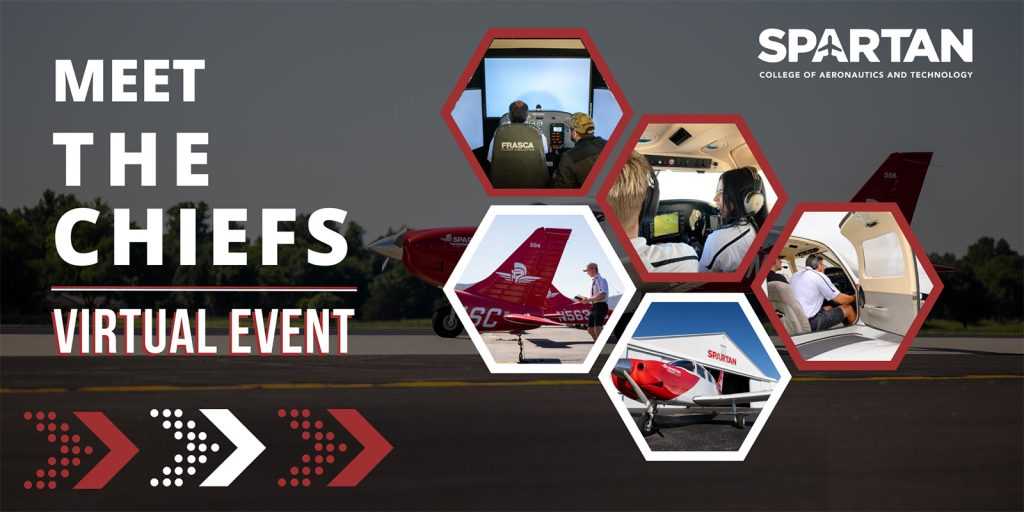Aviation Flight
New Partnerships and Pilot Pathways Availiable
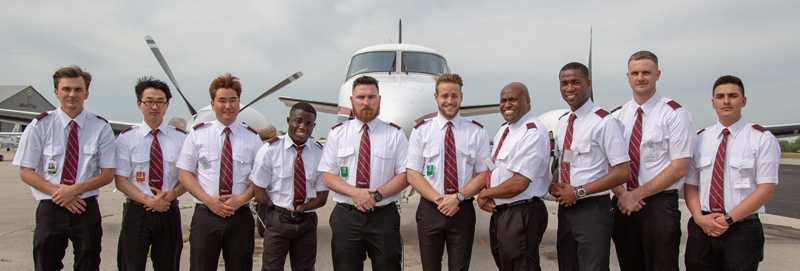
Training the Next Generation of Pilots at Spartan College's Flight School
Spartan College of Aeronautics and Technology provides training to aspiring pilots in Tulsa, Oklahoma. Our aviation flight training program and instruction are comprehensive, giving you the opportunity to learn the topics and skills necessary to be a safe and qualified pilot. Training to become a pilot at Spartan College will give you the experience needed to sit for multiple Federal Aviation Administration (FAA) part 141 pilot certifications and ratings.*
Typical graduates of our FAA part 141 approved Aviation Flight program may apply to continue on to take the Bachelor of Science in Technology Management program, as well as apply to work as a Certified Flight Instructor.
HOUSING SCHOLARSHIPS AVAILABLE TO THOSE WHO QUALIFY
Interested in Learning More?
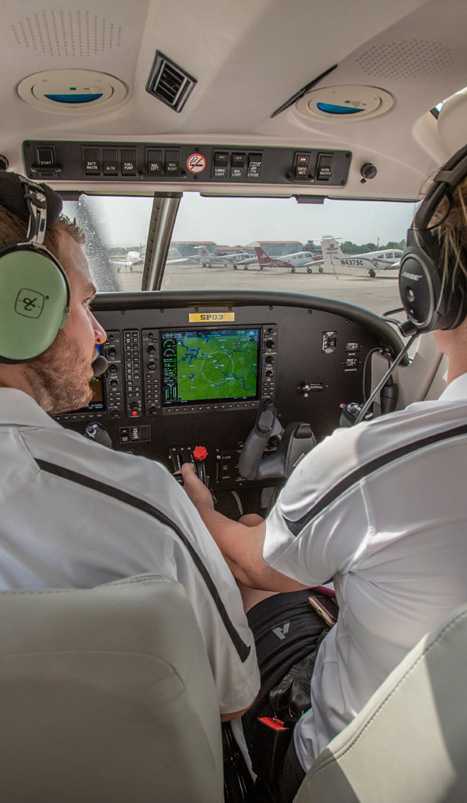
Program Details
Aviation Flight, Associate of Applied Science (Degree)
17 Months (*Airplane Pilot Commercial D.O.T. 196.263-014)
This program is designed to provide the necessary education and entry-level skills that will prepare students for FAA certifications and ratings exams.¹
The ground school courses equip students with the academic knowledge to safely and efficiently perform flight duties and also prepare them for their required FAA written examinations. Flight training prepares students for their respective FAA flight exams in accordance with the FAA Airmen Certification Standards.¹
The general education courses are designed to enhance students’ background and intellectual proficiency. Aviation safety, professionalism, and precision flying are emphasized in all courses.
Milestones that may be earned in our program:
- Private Pilot Airplane Single-Engine
- Instrument Rating
- Commercial Pilot Certificate Airplane Single-Engine
- Commercial Pilot Certificate Airplane Multi-Engine
- Certified Flight Instructor Certificate
- Certified Flight Instructor Instrument
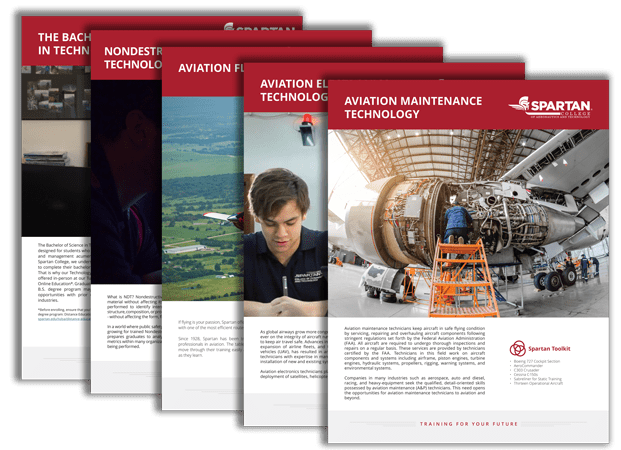
PREPARE FOR TAKEOFF BY GETTING A LAY OF THE LAND
Course Work
Part of the Demand for Airline Pilots and Technicians
according to the Boeing Pilot Technician Outlook 2021 – 2040.
*Boeing: Pilot and Technician Outlook, http://www.boeing.com/commercial/market/pilot-technician-outlook/
OUR EQUIPMENT

STANDARD FEATURES
- Garmin G1000 NXi AVIONICS SUITE
- Single 10.4″ GDU 1050 PFD
- Single 10.4″ GDU 1050 MFD
- Garmin Flight Charts
- Garmin SafeTaxi
- GMA 1360 Digital Audio Panel
- GTX 335R Transponder
- Aspen Standby EFD 1000
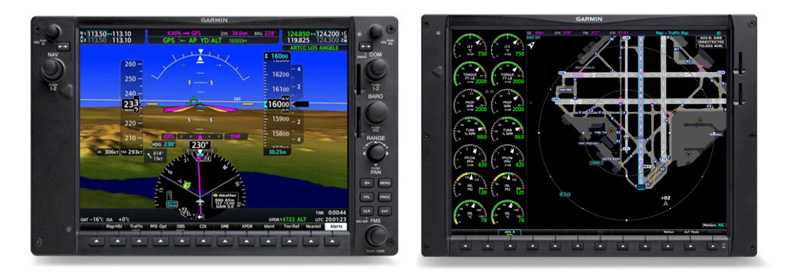

STANDARD FEATURES
- Garmin G1000 NXi AVIONICS SUITE
- Single 10.4″ GDU 1050 PFD
- Single 10.4″ GDU 1050 MFD
- Garmin Flight Charts
- Garmin SafeTaxi
- GMA 1360 Digital Audio Panel
- GTX 335R Transponder
- Aspen Standby EFD 1000


STANDARD FEATURES
- KX 155A Bendix/King Nav/Com w/ GS
- KT 76C Transponder
- Full Injector, PAC RSA-5AD1
- 75 Inch McCauley Propeller
- King GPS-VFR, KLN-89
WHAT DOES OUR FLIGHT SCHOOL HAVE TO OFFER?
Flight Program Timeline
Visualize the steps you'll take from enrolling to lift off!
Flight Facility
123 West Cessna Drive, Tulsa OK 74132
Spartan College’s aviation flight training program is located on a tower-controlled airport with dual runways in Tulsa, Oklahoma.
We maintain a fleet of 36 aircraft, including Cessna 172’s, and Piper Archers. Piper Seminoles are used for multi-engine pilot training and two flight simulators plus a full-motion advanced aviation training device are used in training as well.
According to the FAA Aerospace Forecast 2019-39, the number of jets in the U.S. mainline carrier fleet is forecast to grow an average of 51 aircraft a year.
Sample Classes
Real time weather information system is provided in flight operations. Interactive media materials, charts, cutaway models, smart boards, display boards, video and mock-ups support classroom instruction.
The Aviation Flight program is approved by the Federal Aviation Administration (FAA) and meets the requirements established in the Code of Federal Regulations, Title 14, Chapter 1, Subchapter H, Part 141.
This course continues developing understanding of the aircraft and aircraft systems including weight and balance, fuel systems, oil systems, electrical systems, propellers, and aircraft engines.
This course further develops the student’s knowledge of precision instrument approach systems. This course covers all instrument regulations of CFR Part 91 required to operate as an instrument pilot.
This course will cover VFR long-distance cross-country flight planning including a comprehensive set of lessons covering weather information, atmospheric compositions, causes for seasonal weather changes, effects of humidity, cloud formations and classifications, stability, air masses, and fronts, and mid-latitude cyclonic activity.
FAQ's
Questions? Here’s what you need to know about Spartan College’s hands-on pilot training program:
The ground portion of the flight program in Tulsa, Ok is taught and monitored by a Senior Flight Instructor who guides students to mastery of subject matter supplemented by videos, websites, and FAA documents. After mastering the ground lesson, students apply their new-found knowledge to the maneuvering or flight portion of the program. Spartan College employs a variety of training devices to compliment actual flight. Cockpit Procedure Trainers (CPT) and Advanced Aviation Training Devices (AATD), such as Frasca and Redbird simulators, help students gain experience with different maneuvers while on the ground, then apply learned concepts in the air.
Flying will occur on a schedule that will have you training approximately 3 to 4 times per week. A great deal of the flying depends on the rate of learning a student can achieve. Flying multiple times per week is a proven method of achieving greater retention and proficiency in the flight training course.
The cost of our Aviation Flight program can be found on the second page of our Catalog Supplement.


